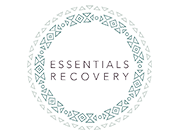Entering rehab is both exciting and daunting at once. Many people are relieved to know that they no longer have to shoulder the overwhelming weight of addiction on their own. They look forward to feeling better. They long to make careful, calculated decisions without being driven by obsessive urges to use. If you’re ready to commit to rehab but are worried about how long your treatment might take, you’re definitely not alone. In addition to being eager to get well, many new patients have pressing, outside responsibilities that they simply cannot ignore.
The good news is that drug and alcohol treatment centers can be as flexible and adaptable as you need them to be. Rehab professionals know all about the many common challenges that people face when entering recovery, and they understand that no single treatment model is guaranteed to work well for everyone. You can find addiction treatments that last just 30 days as well as options that span six full months. There are also programs that are held entirely on closed campuses and addiction services that are provided solely on an outpatient basis.
The Need for Instant Gratification in Addiction
Addiction changes the way in which the brain performs. Gradual alterations in an addict’s brain chemistry foster the need for immediate gratification. This is why when addicts become uncomfortable, their first inclination is to drink or use substances to instantly alter their mental and emotional states. Learning how to overcome the need for instant gratification is an important part of addiction treatment. During recovery, the brain heals and normal brain chemistry and brain functioning are restored.
Patients develop higher levels of distress tolerance and obtain healthy, real-world coping skills. In short, although the idea of spending one or more months in treatment might seem unpleasant now, you’ll likely have very different ideas further down the road. In recovery, you’ll come to recognize that the decisions and actions that provide immediate gratification aren’t always as beneficial as the ones that take a bit more time.
Flexible Treatment Options Make Duration of Treatment Less of a Concern
In inpatient rehab, you’ll be separated from the outside world throughout the entirety of your treatment. This keeps people in recovery completely removed from the temptations and stressors that often support or drive their addictions, and it gives them a chance to focus solely on getting well. Inpatient rehab is the ideal choice for anyone who’s been abusing highly addictive substances or who’s battled untreated addiction for an extended period of time. It is also recommended for those with known co-occurring disorders.
Outpatient rehab is structured to offer similar services and a similar level of support, but it also provides more freedom. In an intensive outpatient program, you’ll likely spend 35 hours each week on campus. In your remaining free time, you can go to school or work, and spend time with your family. Outpatient rehab works best for those who are ready to take a self-managed approach to treatment, and who haven’t been using highly addictive substances or been addicted for a very long time. If your primary concerns about the duration of addiction treatment are related to outside responsibilities, opting for outpatient rehab may alleviate your fears. There are even outpatient programs that require a smaller commitment of time each week that work well for those who’ve completed more rigorous programs before or who aren’t living with multiple risk factors for relapse.
Why Longer Treatment Times Are Advisable
Three months is currently considered the gold standard in addiction treatment. Although some people may benefit from longer treatment times and others may fare well with less, three months in treatment is considered sufficient time for establishing a solid foundation for recovery. It’s important to note that much of the average person’s first month in rehab is spent battling physical withdrawal symptoms. With certain substances, moderate to severe withdrawal symptoms may take as long as two weeks to abate. With others, withdrawal medications and targeted weaning programs can prolong the detox process for one full month.
Thus, with a 30-day program, most patients aren’t getting enough focused time in behavioral therapy and other advanced treatment services to actually benefit them. It’s also important to note that addiction is a disease primarily affecting the brain. It disrupts the natural balance of neurotransmitters for at least 60 to 90 days. When people use substances that affect the production of dopamine, gamma-Aminobutyric acid, or other neurotransmitters like them, they can struggle with feelings of low motivation, depression, anxiety, insomnia, and other post-acute withdrawal symptoms (PAWS) for months. 60 to 90-day programs give the brain adequate time to heal.
After a full dopamine recovery has been made and after the production and distribution of other neurotransmitters have evened out, the risk of relapsing significantly declines. However, some treatment is always better than no treatment at all. Committing to a 30-day program is a good start. Even after completing a rigorous, 90-day program, all recovering addicts are encouraged to seek ongoing recovery support. If you’re ready to get started with your recovery and need help finding the right treatment center, call us today at 302-842-2390.


